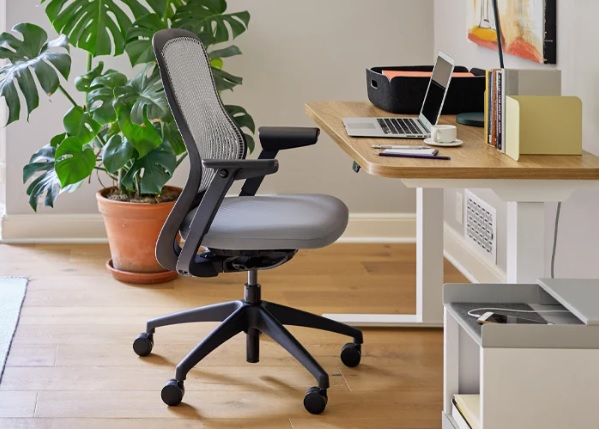Although there are numerous benefits to using a standing desk at work (including higher calorie burn, heightened mood and improved posture), for some, standing at work for the whole day is not comfortable. Ergonomic chairs provide an alternative to traditional office chairs and to standing desks. The ergonomic chair is designed to fit around and support the human body; the chair encourages the body into supported positions which cradles the body in a healthy posture and relieves the body’s pressure points. As such, the individual is able to continue using traditional desks within the workplace without the negative health impacts which come as a result of being seated.

Ergonomic chairs have significant benefits to the physical health of the individual. The supportive pressures applied by the chair can improve the individual’s posture which in the long-term can have positive impacts on their musculoskeletal health. While standing desks can also be beneficial to improving posture, there is no support provided by the desk to facilitate this, instead it is up to the individual’s dedication and motivation to stand in the correct posture. In this way, ergonomic chairs are able to facilitate good posture and support for the individual’s musculoskeletal health which standing desks do not provide.
The comfortability which chairs (and ergonomic chairs in particular) offer also gives the chair an advantage over standing desks, especially when being used for long periods of time as in traditional 9-5 office-based jobs. The numerous adjustable components of the ergonomic chair tailors its support to the specific body of the individual which ensures that the chair fits perfectly around the individual rather than the individual forcing themselves into a chair which doesn’t fit them well.
Since the ergonomic chair is so adjustable and tailored in its support to the individual user, it is very supportive for the user’s posture which can help to alleviate the person’s back pain or help to prevent back pain from arising. The chairs are designed with backrests with extra high support, protecting both the upper and lower parts of the back. The backrest supports the natural curvature of the spine and the seat helps to alleviate pressure put on the hips and lower lumbar region. In this way the ergonomic office chair retains the positive results of sitting such as comfortability, while also boosting health benefits which can contribute to increased performance and productivity.
On the other hand, although ergonomic chairs are more supportive of the back than a regular chair, a standing desk is altogether better for the back than either chair because the human body has evolved to be positioned in an upright standing posture rather than lowered into a seating position and so standing allows the spine to stretch and be held in its natural state. When choosing between supplying an office with standing desks or with ergonomic chairs it may be difficult to determine which is more comfortable or productive in the long-run and a combination may seem like the most satisfying option.
It is also worth considering that there is substantial evidence which supports standing over sitting due to the health benefits which come with standing. For instance, standing for long periods of time burns calories at a greater rate which leads to smaller weight gain, resulting in greater health benefits for the individual. Although ergonomic chairs are healthy because they promote efficient and effective back support, they also promote a sedentary style of working which does not offer the body the same advantages as using a standing desk. Further, the inactivity which comes with sitting all day leaves the person with lower energy levels which can negatively impact the mental health and the productivity of the worker and so if the organisation can afford to provide standing desks in the office, they will likely see productivity and welfare benefits.
Finally, in terms of affordability, the ergonomic chair offers the buyer a much more financially feasible option, especially for an office plan where a bulk supply of products is required and so standing desks can begin to seem more out of reach in comparison to the ergonomic chair.